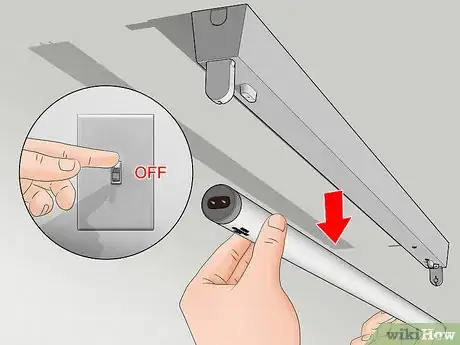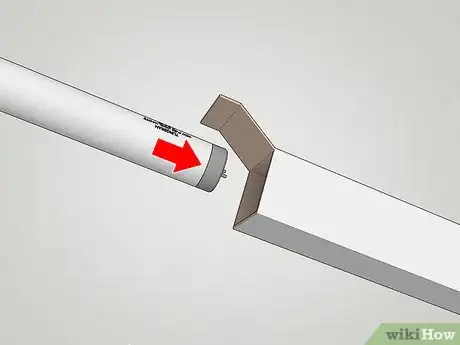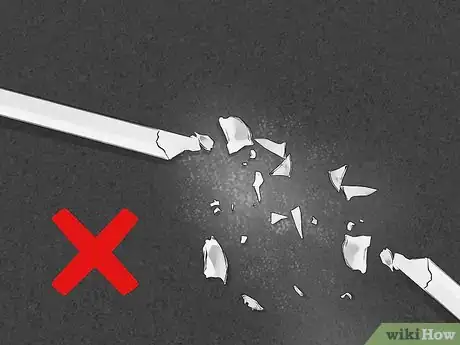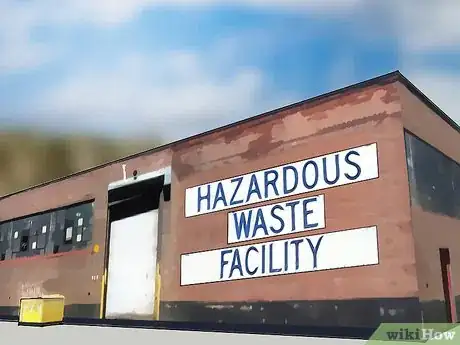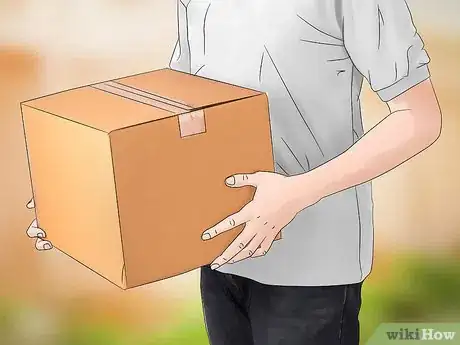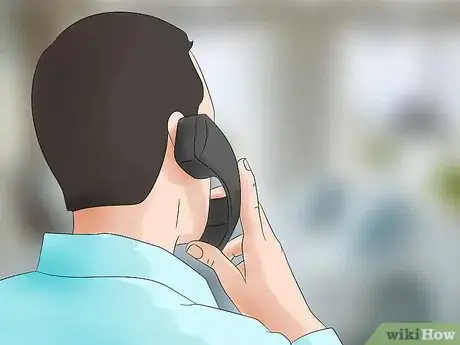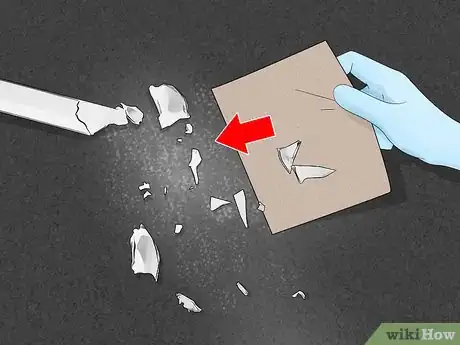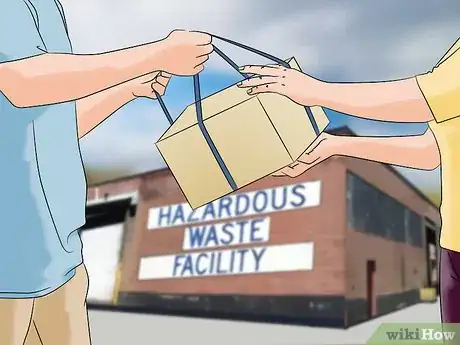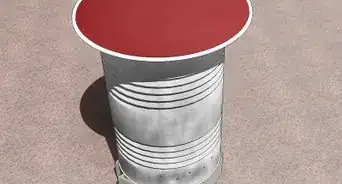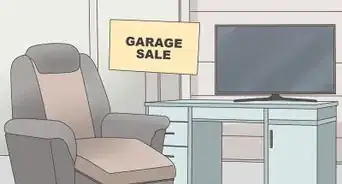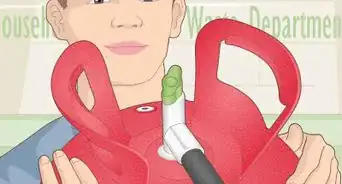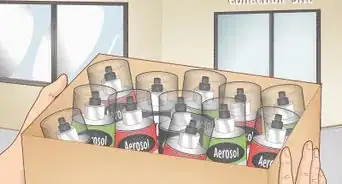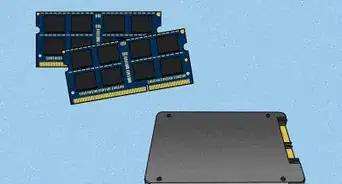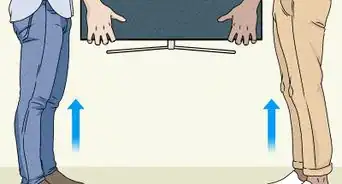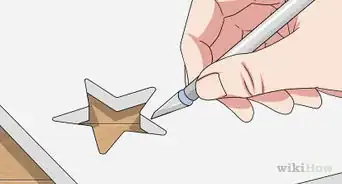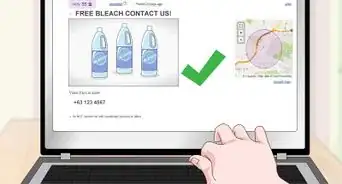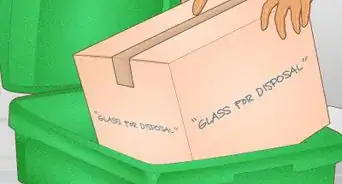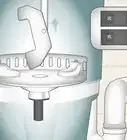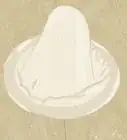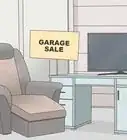This article was co-authored by Daniel Stoescu. Daniel Stoescu is a Master Electrician and the Owner and Operator of Home Tech Solutions, LLC in Hampton, Virginia. With over a decade of experience, Daniel specializes in wiring residential, commercial, and light industrial structures. The Home Tech Solutions team has over four decades of combined experience and offers comprehensive solutions for residential electrical needs.
This article has been viewed 44,342 times.
Because fluorescent tubes contain hazardous mercury, there are certain regulations that dictate how to properly dispose of them. Fortunately, even with these regulations, there are still several easy ways for you to get rid of old fluorescent tubes safely and legally. These include recycling them, taking them to a hazardous waste collection center, or even mailing them back to your lamp supplier.
Steps
Removing and Storing the Tubes
-
1Turn off power to the light fixture and remove the tube. Rotate the bulb clockwise to loosen it, then pull 1 end away from the fixture to pop it out. Pull the other end out of the fixture as well to finish removing the tube.[1]
- Use a ladder when removing the bulb to minimize the chance of you dropping it.
-
2Store the tube in a protective container or box until you can recycle it. If you purchased the light yourself, simply place the tube back in the box it originally came in. If you don’t have this box, wrap the tube in bubble wrap or newspaper and gently place it in a sturdy box.[2]
- You may not be able to dispose of the tube right away, so store it in a dry, secure place where it won’t be jostled or moved around a lot (such as a rarely used storage closet).
Advertisement -
3Avoid breaking the tube or throwing it away to prevent mercury leaks. The mercury inside fluorescent tube lights is hazardous, so extra care should be taken to ensure that this material doesn’t leak. In some areas, it’s actually illegal to dispose of fluorescent tubes in the trash, so be sure to follow the proper steps in recycling your fluorescent tubes to avoid breaking the law or damaging people’s health.[3]
Warning: Store the tube away from exposure to the elements. If it breaks inside the box and is exposed to rain, the water may cause the mercury to run off into the ground.
Recycling Your Fluorescent Tubes
-
1Take household tubes to a hazardous waste collection center. This is the easiest option if you only have a few tubes to dispose of. However, in some areas, these centers only collect hazardous waste once or twice a year, so be sure to check with your local government ahead of time to confirm you’re able to take the tubes to the center when you plan to.[4]
- Some local governments will also carry out collection drives, where agents come to your home to take away your hazardous waste. Contact your local government to find out if this is an option for you.
Warning: Use extra caution when transporting fluorescent tubes in your car, since the jostling and movement of the car may inadvertently cause them to break.
-
2Have a lamp recycling vendor come pick up your tubes if you have a lot. If you run a medium-sized or large business and have dozens of tubes to dispose of, this is the easiest and safest way to recycle them. Look on your state government’s website or contact the Department of Energy to find a list of local vendors who you can contact to pick up your tubes for you.
- Note that some of these vendors may require you have to a minimum number of tubes to be disposed of, such as 10 pounds (4.5 kg) worth.
- Your local government may also be willing to pick up the tubes from your business, for a small fee. This fee is usually somewhere between $0.50-1.00 per lamp.
-
3Contact your lamp supplier about mailing your spent tubes back to them. Many lamp suppliers and lamp recycling vendors will take spent tubes off of your hands if you pay the costs of shipping. If you’re mailing the tubes back to the original supplier, you can normally request a free collection box to ship them in.
- The cost of shipping will vary based on your area and vendor, but it will probably be about $1 per lamp.
- For safety, be sure to wrap the tubes in bubble wrap or some other protective wrapping before shipping them.
-
4Take the tubes to retailers that sell them if they offer in-store recycling. Some vendors who sell fluorescent tubes will also offer to take them off of your hands and recycle them for you if you bring them to the store. Do an online search for stores in your local area that offer in-store recycling for fluorescent tubes.[5]
- Be sure to call the store ahead of time before you bring in your old tubes. Because it can be hazardous to transport the tubes, you’ll want to make sure the store will actually take them off your hands once you get there.
- Note that some stores may only recycle certain types of bulbs (such as CFLs or 4 ft (1.2 m) fluorescent tubes).
Dealing with Broken Tubes
-
1Clear the room immediately and air it out for about 15 minutes. If possible, open any windows in the room to make it easier to air out. Close the door and keep people and animals from entering the room until 15 minutes have passed.[6]
- Turn off your HVAC system to the room, if you can, to prevent the harmful mercury from spreading throughout the building.
-
2Clean up the large pieces of broken tube with a stiff piece of cardboard. This will allow you to contain the mercury contamination to this piece of cardboard, which you can throw away at the end of this whole process. For maximum safety, wear a breathing mask and gloves as you’re cleaning the broken pieces.[7]
Warning: Don’t use a broom or any cleaning supplies you want to keep to clean up these pieces. The mercury is likely to contaminate whatever you use to clean it up, so you’ll have to throw away your cleaning supplies as well.
-
3Pick up any remaining dust and place everything in an airtight container. Use a vacuum cleaner or pieces of duct tape to get all the small bits of dust and glass off of the floor. Then, put all the broken pieces and the contents of the vacuum bag into an airtight container that mercury can’t leak out of.[8]
- This can be a glass jar with a metal lid, a plastic food container, or even a sealable plastic bag.
- Note that you should only vacuum the mess if there is dust or broken glass that you aren’t able to clean up with the piece of cardboard. Vacuuming could inadvertently spread the contaminated dust around the room, so only do this if you don’t have duct tape to use.
-
4Take all the trash to a hazardous waste collection facility. Contact the facility ahead of time to make sure you’re cleared to bring the hazardous material to the site. If you’re not able to dispose of it immediately, ask someone at the facility how you should store the broken bulb until you’re able to bring it to the waste center.[9]
References
- ↑ https://www.familyhandyman.com/electrical/fluorescent-light/how-to-replace-a-fluorescent-light-bulb/
- ↑ https://www.calrecycle.ca.gov/reducewaste/fluoreslamps
- ↑ https://www.calrecycle.ca.gov/reducewaste/fluoreslamps
- ↑ https://www.calrecycle.ca.gov/reducewaste/fluoreslamps
- ↑ https://www.epa.gov/cfl/recycling-and-disposal-cfls-and-other-bulbs-contain-mercury
- ↑ https://www.epa.gov/cfl/cleaning-broken-cfl
- ↑ https://www.epa.gov/cfl/cleaning-broken-cfl
- ↑ https://www.cnet.com/how-to/how-to-clean-up-a-broken-cfl-bulb/
- ↑ https://www.epa.gov/cfl/cleaning-broken-cfl
